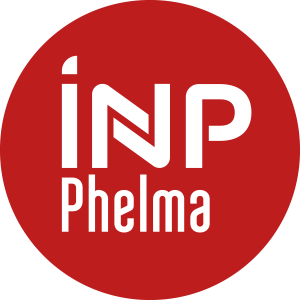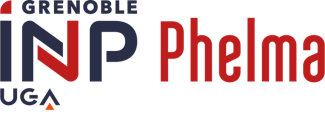Volumes horaires
- CM 8.0
- Projet 0
- TD 8.0
- Stage 0
- TP 24.0
Crédits ECTS
Crédits ECTS 3.0
Objectif(s)
The purpose of this lecture is to provide the students with a description of the main detection principles for charged (electron, proton, alpha) and neutral (photon and neutrons) particles. The course presents the most common devices used in nuclear medicine (both imagery and therapy) with an emphasis on gazeous detectors, semi-conductor devices and scintillators detectors.
For the lab works, the students work in a team of two during 8 hours sessions. Four topics are addressed: alpha/gamma spectroscopies, gamma-gamma coincidences and PET scan.
Contenu(s)
I. Introduction
Reminder : interaction particle-matter
General operating of a detector
Statistics and error propagation
II. General characteristics of a detector
Sensitivity & linearity
Efficiency and resolution power
dead time
III. Gazeous detectors
Ionisation, excitation and recombination
electron and ion transport
Operating modes of gazeous detectors
Signal shaping and Acquisition
IV. Semi-conductor devices
Reminder: basics of semi-conductors
Characterisitics of Germanium and Silicium devices
Use for photon detection
V. Scintillator devices
General properties and classification
organic scintillators
inorganic scintillators
gazaeous scintillators
Readout and Photomultipliers
Lab Works:
- alpha spectroscopy using a Silicon detector
- gamma spectroscopy using a germanium detector
- gamma/gamma coincidences with a scintillator
- PET scan
Prérequis
Basics of nuclear physics and interactions of radiations with matter
Semestre 9 - L'examen existe uniquement en anglais 
50% written exam (rattrapable)
50% labwork report (non rattrapable)
SESSION NORMALE :
Types d'évaluation TP + DS écrit
*Évaluation rattrapable :*
Type d'évaluation : DS écrit
Durée : 2h
Documents autorisés : 1 feuille de notes R/V
Documents interdits :
Matériels spécifiques autorisés :
Calculatrice : autorisée
Possible en distanciel :
Commentaire :
*Évaluation non rattrapable :*
Type d'évaluation : Rapports TP
Durée :
Documents autorisés :
Documents interdits :
Matériels spécifiques autorisés :
Calculatrice :
Possible en distanciel :
Commentaire :
SESSION DE RATTRAPAGE :
Types d'évaluation DS écrit
Type d'évaluation : DS écrit
Durée : 2h
Documents autorisés : 1 feuille de notes R/V
Documents interdits :
Matériels spécifiques autorisés :
Calculatrice : autorisée
Possible en distanciel :
Commentaire :
50% written exam (rattrapable)
50% labwork report (non rattrapable)
Le cours est programmé dans ces filières :
- Formation - Double-Diplômes Ingénieur/Master - Semestre 9 (ce cours est donné uniquement en anglais)
- Cursus ingénieur - Filières - Semestre 9 (ce cours est donné uniquement en anglais)
Semestre 9 - Le cours est donné uniquement en anglais 



